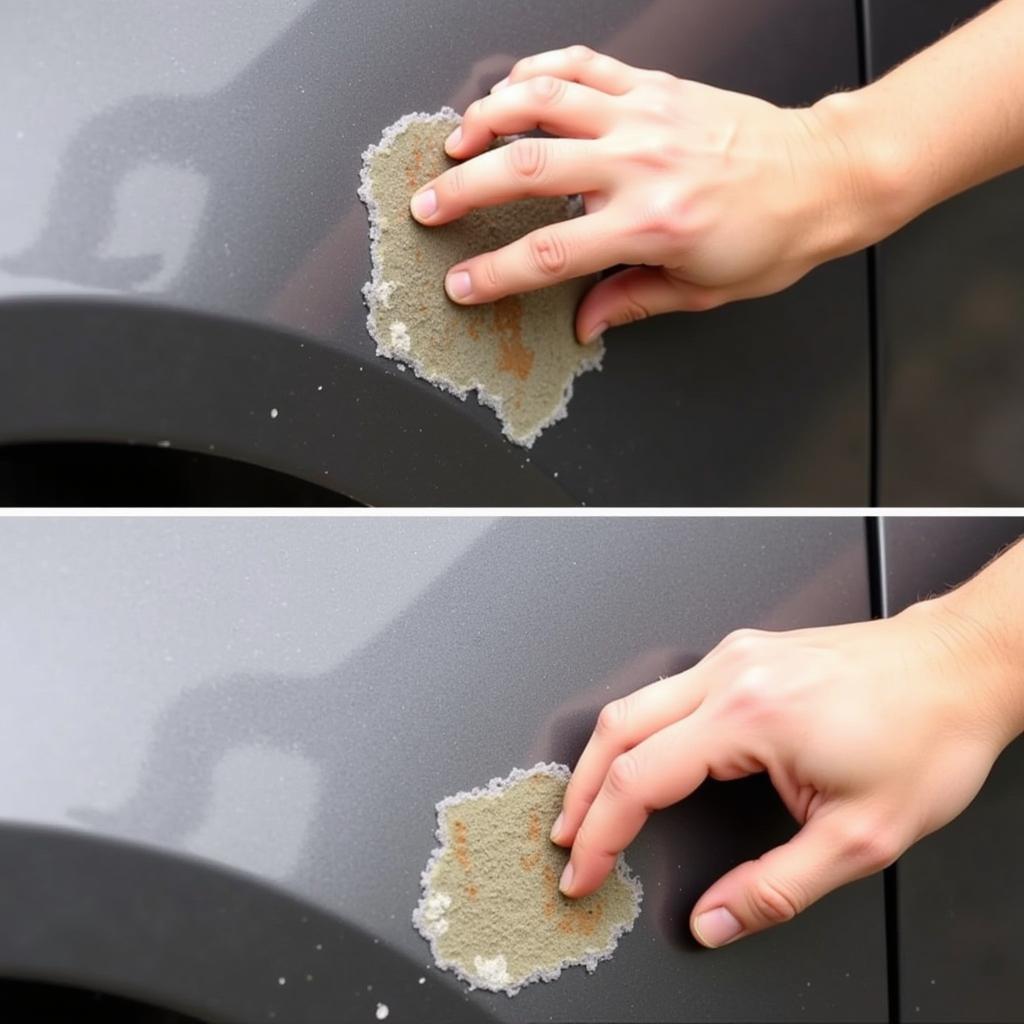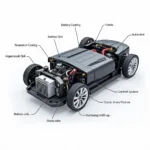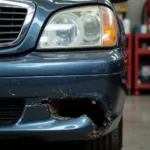Rust is a common enemy of car owners, and knowing how to repair light rust on a car is crucial for preserving its value and appearance. Addressing rust early can prevent it from spreading and causing more significant damage down the road. This guide provides a comprehensive approach to tackling light surface rust, empowering you to take charge of your car’s maintenance.
If you’re looking for reliable car repair services in Albany, NY, check out Albany Light Truck and Car Repair Albany NY 12205. They offer a wide range of services to keep your vehicle in top condition.
Identifying Light Rust on Your Car
Before you begin the repair process, it’s important to correctly identify the type of rust you’re dealing with. Light surface rust appears as small, discolored spots on the paint surface. It hasn’t yet penetrated the metal underneath. If the rust has eaten through the paint and created pits or holes, it’s more severe and may require professional attention.
Where to Look for Rust
Rust typically forms in areas exposed to moisture and road salt, such as wheel wells, rocker panels, and the underside of the car. Don’t forget to inspect areas where paint chips and scratches have occurred, as these are prime locations for rust to develop. Regularly inspecting these areas, especially after winter, can help you catch rust in its early stages.
 Removing Light Surface Rust from a Car
Removing Light Surface Rust from a Car
Gathering Your Rust Repair Supplies
Once you’ve identified the areas affected by light rust, gather the necessary supplies. You’ll need:
- Sandpaper (various grits, starting with 150-grit and progressing to finer grits like 320-grit)
- Masking tape and paper
- Rust converter
- Primer
- Automotive paint (matching your car’s color)
- Clear coat
- Safety glasses and gloves
- Clean cloths
Having all the necessary supplies readily available will streamline the repair process.
Step-by-Step Guide to Repairing Light Rust
Follow these steps to effectively repair light rust on your car:
-
Prepare the Area: Clean the rusty area thoroughly with soap and water. Then, use masking tape and paper to protect the surrounding paintwork.
-
Sand the Rust: Using 150-grit sandpaper, carefully sand the rusted area until the rust is completely removed and you reach bare metal. For smaller areas, you can use a rust eraser tool.
-
Smooth the Surface: Switch to progressively finer grits of sandpaper (e.g., 220-grit, then 320-grit) to smooth the sanded area and feather the edges to blend with the surrounding paint.
-
Apply Rust Converter: Follow the manufacturer’s instructions for the rust converter you’ve chosen. Apply a thin, even coat to the sanded area and let it dry completely. The rust converter chemically transforms the remaining rust into a stable compound, preventing further corrosion.
-
Prime the Area: Once the rust converter is dry, apply a thin, even coat of automotive primer to the area. Primer provides a smooth surface for the paint to adhere to and helps prevent future rust formation. Allow the primer to dry completely.
-
Paint and Clear Coat: Apply several thin coats of automotive paint that matches your car’s color, allowing each coat to dry before applying the next. Finish with a clear coat for added protection and shine.
-
Final Touches: After the clear coat has dried, remove the masking tape and paper. Polish the repaired area to blend it seamlessly with the surrounding paintwork.
Are you unsure about the ABS light on car repair cost? Check our resource on the subject for more information.
Preventing Future Rust
Regular washing and waxing can help protect your car’s paint and prevent rust. Keeping your car clean, especially during winter months, removes corrosive substances like road salt. Applying a rust inhibitor to vulnerable areas can also provide additional protection.
“Regular maintenance is key to preventing rust,” says automotive expert, Michael Davis. “Addressing minor rust issues promptly can save you time and money in the long run.” Another expert, Sarah Miller, adds, “Protecting your car from the elements is crucial, especially in harsh climates. Consider using a car cover for added protection.”
Conclusion
Repairing light rust on your car is a manageable DIY project that can save you money and preserve your vehicle’s appearance. By following these steps and practicing preventative measures, you can keep your car rust-free for years to come. Remember to address rust promptly to prevent it from becoming a more significant problem. How to repair light rust on a car becomes less of a question when you follow this detailed guide.
FAQ
-
Can I use household paint to repair rust on my car? No, automotive paint is specifically formulated to withstand the harsh conditions a car is exposed to.
-
How long does it take for rust converter to dry? Drying times vary depending on the product and the environment, so always follow the manufacturer’s instructions.
-
Do I need to prime the area before painting? Yes, primer is essential for proper paint adhesion and rust prevention.
-
Can I repair rust if it has gone through the metal? Severe rust damage may require professional repair.
-
What is the best way to prevent rust on my car? Regular washing, waxing, and applying rust inhibitor are effective preventative measures.
-
How often should I inspect my car for rust? It’s recommended to inspect your car for rust at least twice a year, especially after winter.
-
Where can I find reliable car repair services? Consider Albany Light Truck & Car Repair for your car repair needs.
For any further assistance or specific repair inquiries, please don’t hesitate to contact our 24/7 customer service via WhatsApp: +1(641)206-8880 or Email: [email protected]. We are here to help you with all your car repair needs. You might also find helpful information in our articles about Albany light truck and car repair and the cost associated with ABS light repairs.


